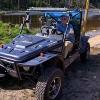Brake Master Cylinder
-
Similar Topics
-
By Grant
I recently bought an axis 500 and it’s missing a box or something the plug is L shaped I’ve looked through the wiring diagrams and still can’t figure it out. The plug is located right near the battery housing
-
By Jim Kessell
Hi All
Just installed a predator 670 on my Landmaster. My question is can I remove the low oil pressure wire fitting and plumb my mechanical gauge into that access point?
Thanks in advance for your advice !!
Jim
-
By lincolnsq175
Ive searched and cannot find any performance parts that fit my machine.
I have a 2020 coleman ut400.
Im looking for machined sheave kit, programmers, cdi, exhaust and intake.
I know these are yamaha rhino clones but are they rhino 450 clones?
Any info is appreciated.
-
By dman66
My buddy has a ut400 that the forward gear keeps popping out of gear. She only has like 400 miles on the odometer .the shift cable has been adjusted and the shift lever has been updated / modified. All other gears are good. Is there an internal detent cam or something that wears out or shift fork that can be replaced ? Or is there some other magic that I can perform ? Looks like the engine needs to be split.
-
-







Recommended Posts
Join the conversation
You can post now and register later. If you have an account, sign in now to post with your account.
Note: Your post will require moderator approval before it will be visible.